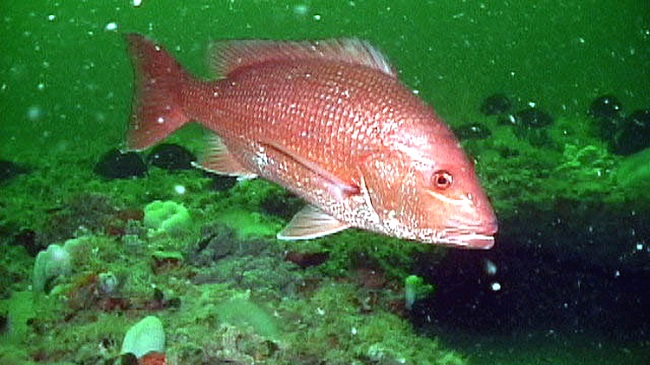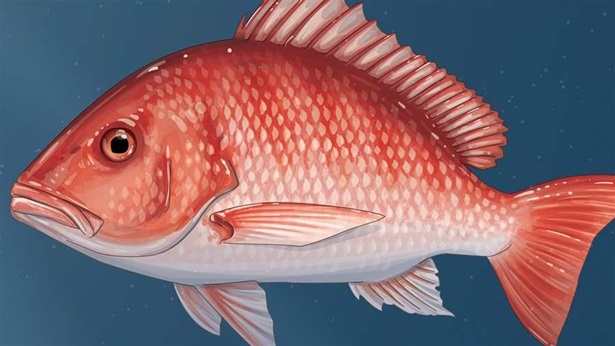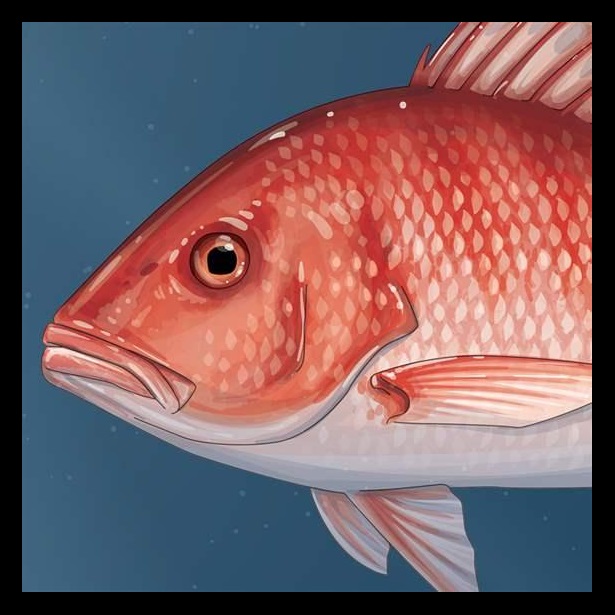Gulf of Mexico Red Snapper May Be Headed for Deep Trouble
Extended recreational fishing season and proposals to weaken policies put species at risk

Gulf of Mexico red snapper is a favorite catch, but an extended fishing season could spell trouble for the recovering species.
© NOAA
Red snapper’s road to recovery is getting a lot bumpier in the Gulf of Mexico.
Last week’s decision by the federal government to disregard science-based quotas and allow more recreational fishing days—plus separate proposals by fishery managers and members of Congress to change who manages the species, and how—could undermine the progress of this once-depleted population.
To help these fish continue their recovery, the government should turn back to science and let it guide all policy decisions.
Without releasing any data or scientific analysis, and with minimal opportunity for public input, the U.S. Department of Commerce on June 14 decided to allow private recreational anglers to fish for red snapper every weekend this summer starting on Fridays, plus the July 4 and Labor Day holidays. The move granted fishermen an extra 39 days of fishing and came after the closing of a three-day federal fishing season—a period the government initially set to keep quotas in check because of much longer fishing seasons in state waters.
In exchange for the extended season, the five Gulf states agreed to cancel some red snapper fishing in their state waters this summer, primarily on weekdays. This marks the first time in years that the states worked with the federal government toward one red snapper fishing season.
Government predicts effects of extended fishing season
But having fewer state fishing days probably won’t compensate for all the extra red snapper taken from federal waters during this extended season, especially because weekends and holidays are heavy fishing times. Gulf states’ jurisdiction over reef fish rules extends nine miles offshore; the federal zone starts there and runs to 200 miles offshore.
The federal government’s announcement says the extended season may delay red snapper’s full recovery by up to six years—from 2032 to 2038. And, importantly, the Commerce Department says anglers will “substantially exceed” their 2017 science-based quota with the added fishing days. That will very probably lead to overfishing. The agency shouldn’t so easily ignore quotas required under federal law that are meant to ensure the recovery of depleted species and prevent overfishing.
The recreational quota has already been exceeded by as much as several million pounds in eight of the past 10 years. When that happens, fishery managers are supposed to subtract the overage from the next year’s quota, leading to shorter seasons and giving fish populations a chance to rebound. Those “paybacks,” combined with much longer state-water seasons, are partly why the red snapper federal fishing seasons have been so short. As rules stand now, overages still require paybacks, but it’s unclear whether the government will apply those measures in 2018.
Proposals could change red snapper management
Earlier this month, the Gulf of Mexico Fishery Management Council, which governs Gulf fishing, approved lowering the benchmark for what is considered a healthy population for red snapper and other reef species. That change means action to rebuild species wouldn’t happen unless the populations plummet to very low levels. If populations in fact sink that drastically, managers probably would have to impose much more severe restrictions for the species to recover.
In addition, some members of Congress are pushing to weaken federal fishery laws. And some also want to give Gulf states jurisdiction over more ocean territory beyond their current state boundaries. The states have the power to set rules in waters they control. Such a move would mean that the strong, science-based conservation requirements in federal law would no longer apply to red snapper and potentially to many other reef species.
Add in one more complexity: The National Oceanic and Atmospheric Administration’s Fisheries Service (NOAA Fisheries) is slated to issue a new red snapper population assessment next spring, but it won’t include data from the 2017 fishing season. If fishery managers base decisions about future red snapper catch limits solely on that assessment, they’ll be ignoring what is likely to be substantial overfishing this year. That could further hamper red snapper’s recovery. The government’s assessment should account for what’s happening this season.
To meet their legal obligations to the public, managers must avert overfishing and ensure fairness and sustainability for the entire red snapper fishery. But now, as recreational anglers enjoy a boon, charter fishing customers and red snapper diners may pay some costs. If anglers overfish this year, and if overall fishing quotas are reduced next year, the result could be harm to commercial fishermen, who rely on steady sales to restaurants and seafood markets, and charter boat captains, who make a living selling fishing trips. Those two groups have stayed within their quotas, and they should not have to pay for government-sanctioned recreational overfishing.
Science should lead the way
All of these factors are combining to potentially send red snapper into troubled territory. Weakening laws and ignoring science set a bad precedent for how other fish species are managed in the Southeast and beyond.
The Pew Charitable Trusts supports fishermen and wants to see as much red snapper fishing as the science allows. However, shortsighted decisions put at risk the recovery of a species that everyone has been working hard to rebuild for more than 16 years. The Gulf states and federal government can and should work together through the regional council process, established by Congress and federal law, to provide more access for anglers in a way that is sustainable.
By setting and following fishery laws based on science, everyone can enjoy the true reward: a robust red snapper population that can provide recreation, food, and profitable fishing business for years to come.
Holly Binns directs Pew’s efforts to protect ocean life in the Gulf of Mexico, the U.S. South Atlantic Ocean, and the U.S. Caribbean.














